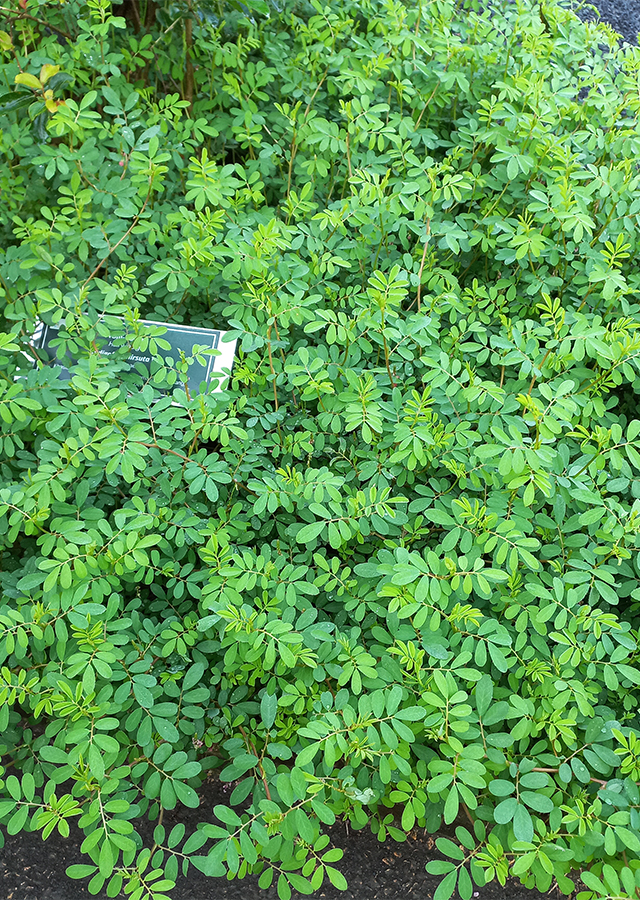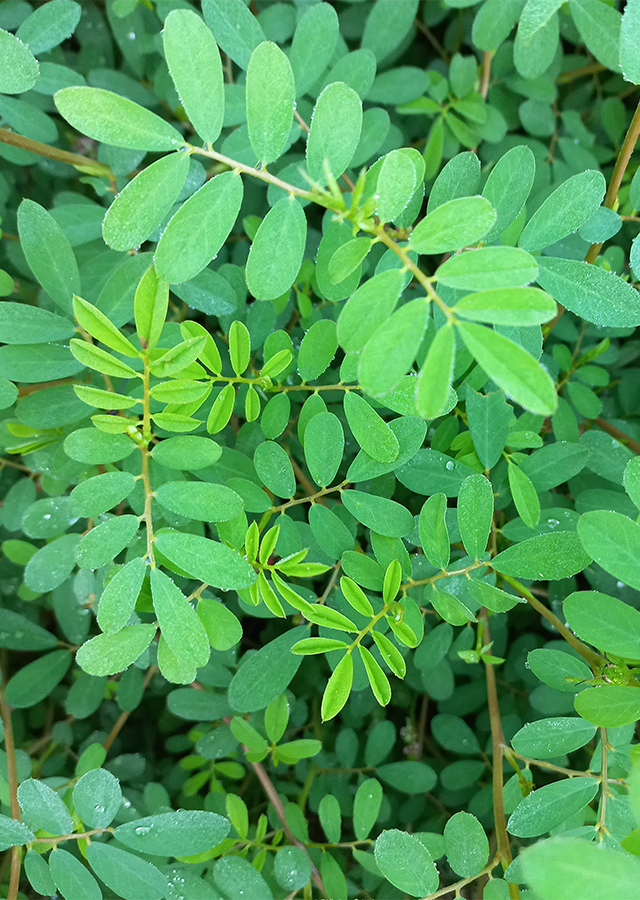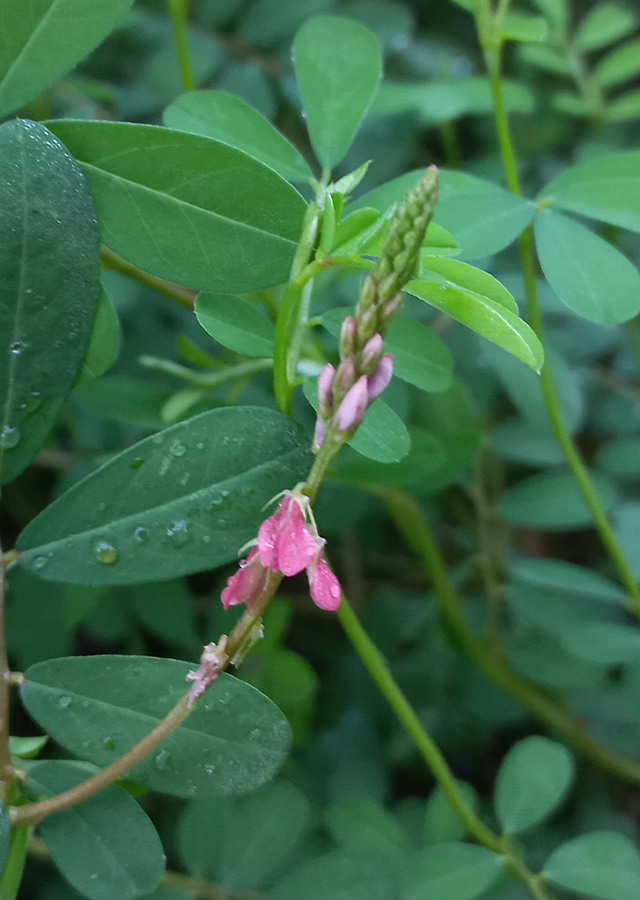Rough Hairy Indigo
Indigofera hirsuta L.
Fabaceae
Location in our garden
Principal



Synonym
Anila hirsuta (L.) Kuntze
Indigofera fusca G.Don
Indigofera hirta Bojer
Habitus
Herbaceous. An erect or spreading herbaceous legume growing 60 - 230 cm tall, with spreading or ascending branches.
Part Used
Leaves
Seeds
Roots
Growing Requirements
Full Sunshine
Habitat
Riverbanks
Forest
Roadside
Grassland
Terrestrial
Overview
Native to Africa, tropical Asia, and parts of the Indian subcontinent and Australia. It has been widely introduced as a cover crop and forage plant, and is now naturalized in many parts of the world including the Americas. The plant is harvested from the wild for local use as a medicine and a dye (a minor source of indigo). It is often grown as a ground cover and green manure.
Vernacular Names
Anil de pasto (Spanish), Indigotier herisse (French), Ying mao mu lan (Chinese), Behaarter Indigostrauch (German), Chota sirphonka (India), Tanuki-komatsunagi (Japanese), Cermai burong (Malay), Salain (Philippines), Khram khon (Thai), Caay (Vietnamese).
Agroecology
A plant of the moist tropics, where it is found at elevations up to 1.350 metres. It grows best in areas where annual daytime temperatures are within the range 22 - 30 °C, but can tolerate 13 - 34 °C. It prefers a mean annual rainfall in the range of 900 - 1.700 mm, but tolerates 750 - 2.700 mm. Succeeds in full sun and in light shade. Grows best in a well-drained, moderately fertile, light to medium textured soil. Tolerant of poor soils, it grows well on moderately poor, sandy soils with a low pH. Prefers a pH in the range 5,5 - 6,5, tolerating 4,5 - 8.
Morphology
- Stems - cylindrical or slightly ridged, densely clothed with long, fine, spreading, grey or reddish-brown pubescence. Stipules linear, setaceous, up to 1 cm long.
- Leaves - Five to seven leaflets, occasionally nine, elliptical-oblong, up to 40 mm long and 25 mm wide, the terminal one rather longer than the lateral, pilose on both surfaces.
- Flowers - dense, many-flowered raceme, hirsute, 20 to 30 cm long, including a peduncle more than 25 mm long. Bracts linear-lanceolate, up to 25 mm long. Pedicels around 1 mm long, reflexed in fruit. Calyx stiff, brown and hirsute, about 4 mm long, divided almost to the base into linear, setaceous lobes. Corolla white pubescent outside, brick-red or rose inside.
- Pods - straight, rather tetragonal, with well-developed sutures, 12 to 20 mm long about 2 mm wide, thickly hirsute; many of the hairs, especially the dorsal ones, usually brown.
- Seeds - cuboid, angular, strongly pitted.
Cultivation
Propagated by seeds - Seed - sow in situ. The seed has a hard seedcoat and may benefit from scarification before sowing to speed up germination. Germination of treated seed takes 7 - 9 days. Early growth of the seedlings is very slow, it can be 6 weeks or more before they are large enough to be able to weed them.
Chemical Constituents
Alkaloids, flavonoids, phenols, glycosides, tannins, steroids, methanol, alcohol, ethyl acetate, anthocyanins, anthroquinones, and phenols.
Traditional Medicinal Uses
- Studies have suggested anti-inflammatory, antibacterial, anticancer, and radical scavenging properties.
- The whole plant/seed is ophthalmic.
- The root is diuretic. It is used to treat kidney problems, haemorrhoids, venereal diseases, and food poisoning
- The leaves are considered to be laxative, generally healing and pain relieving. They are used in the treatment of a range of conditions including liver problems, pulmonary problems, yaws, paralysis, epilepsy, convulsions, spasms and insanity.
- A decoction made from the leaves is used as a treatment against stomach problems and yaws.
- In Kenya, used for chest pains. In Tanganyika, whole plant preparation used as external application for back pain.
Part Used
Reference Sources
- Cabi. Indigofera hirsuta. https://www.cabi.org/isc/datasheet/28601. 10-10-21.
- Fern, Ken. Useful Tropical Plants. (2021). Indigofera hirsuta. https://tropical.theferns.info/viewtropical.php?id=Indigofera+hirsuta.10-10-21.
- Stuartxchange. Philippines Medicinal Plants. (2018). Indigofera hirsuta. http://www.stuartxchange.org/Taiuman.html. 10-10-21.


